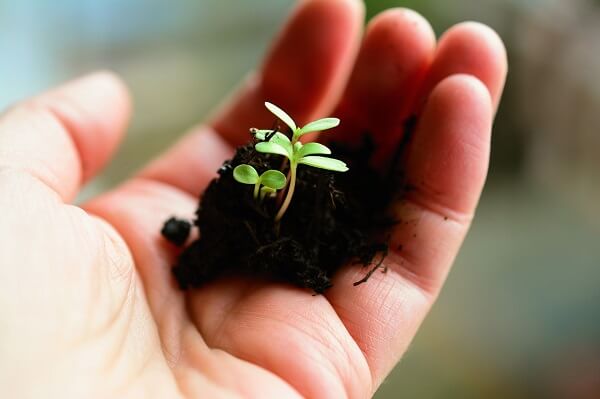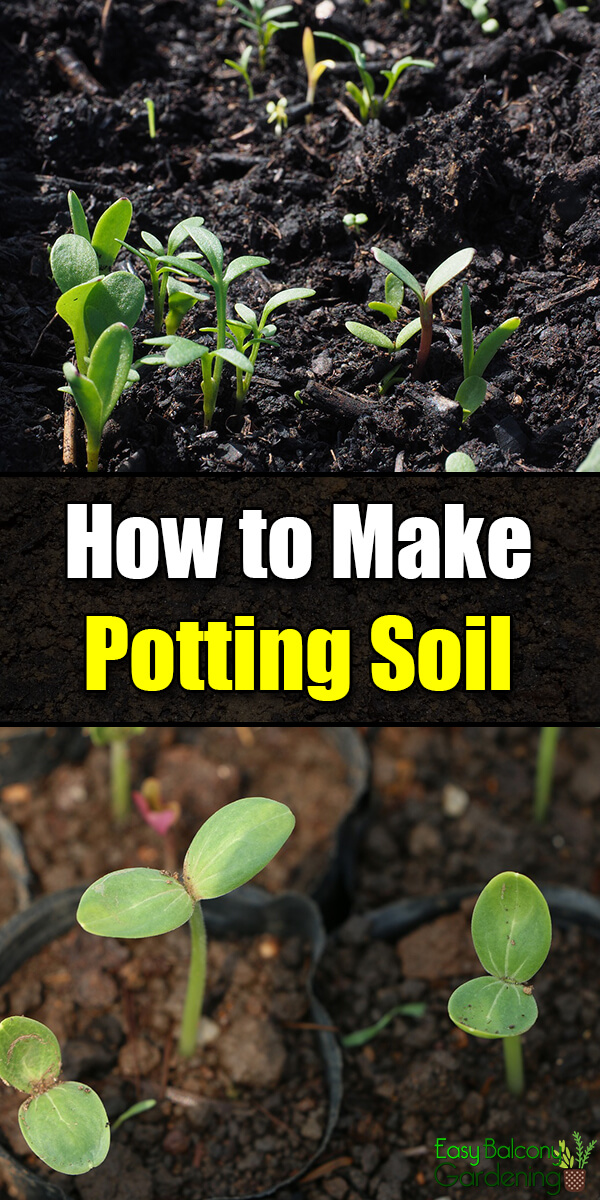Knowing how to make potting soil will help you control the mixture of ingredients and to save money. That avenue, however, may hinge on your collection of potted plants. If it is small, buying potting soil may be easier. Avoid using garden soil. It easily gets compacted and can cause very poor drainage. Potting soil should be light and fluffy.
Some Ingredients Used for Potting Mixes
- Charcoal – absorbs toxic matters; slow decomposition
- Compost – processed manure, e.g., chicken, horse, red wigglers; leaves, straw, twigs, grass clippings, fruits and vegetables.
- Lava rock – not light but has good drainage; does not decompose
- Limestone dust – has calcium carbonate with acidic qualities that helps with soil pH
- Peat moss – softens the texture of the soil thus encouraging root development. Do not use peat moss by itself, as it does not have sufficient nutrition. Additionally, it eventually dries out.
- Super phosphate – a synthetic fertilizer containing phosphate that gradually decomposes in the soil.
- Vermiculite – a safe, odorless mineral that helps improve your potting soil’s aeration and moisture retention.
- Water-soluble fertilizer – a good mixture is 5-10-15 NPK, or 5% nitrogen, 10% phosphorous, and 15% potassium. Plants need a correct balance of these three vital nutrients in order to survive.
Organic Fibers for Potting Soil for Orchids
- Coconut husks – inexpensive and light; decomposes faster than fir bark
- Fir bark – inexpensive and common; has initial difficulty in retaining water
- Redwood bark – has better moisture retention and slower decomposition qualities than fir bark
Potting Mix
- A regular potting mix may consist of one part coarse sand with four parts peat moss or compost to every eight parts vermiculite
- There are special mixes for certain plants like cacti and orchids. You should adjust your potting mix for those plants.
- For example, a good mix for cactus is one part potting mix, one part sand, and some gravel
- It may do you well to use a large container to combine your potting mix. Store the leftovers.
Orchids
- Potting mixes for orchids are different from what most plants require. In lieu of organic soils and rotted matter, you are mixing organic fibers with inorganic materials.
- For example, you can mix 80% fir bark with 20% charcoal, and you have a potting mix for medium-sized orchids that prefer dry roots
- Substitute fir bark with coconut husks, reduce the charcoal proportion to 15%, and add 5% vermiculite, and you will make medium-sized orchids that prefer more moisture.
- To recap, you need to use up to 80% organic materials and the remaining 20% will depend on whether you are planting large orchids or miniatures and whether those plants prefer more or less moisture.
Reminder
- As important as the ingredients you use to make potting soil is the drainage
- You can check if the drainage hole in your pot is sufficient by filling it tightly with potting soil. Then measure two glasses full of water in the pot and gather the liquid that drains. A properly draining pot should release the equivalent of approximately one glass full. Periodically check that drainage to make sure that blockage has not occurred.
Learning how to make potting soil is an excellent idea, but be diligent about avoiding that potential drainage problem as well!









Never realized making potting soil was so simple! Seems like it might be pretty expensive to get started with, but after the initial investment you’d be able to make your own potting soil forever instead of paying through the nose for the stuff they sell at the store.